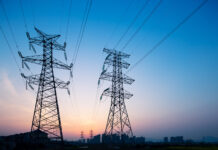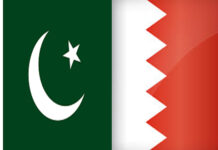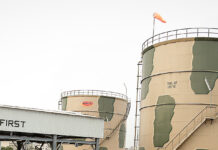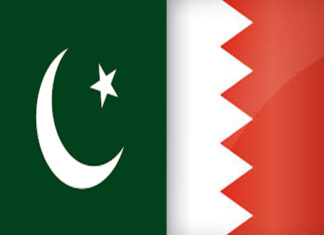ISLAMABAD: The Independent Power Producers (IPPs) have rebutted the inquiry report on power sector and said the high power tariff for consumers is “mainly attributable to higher Transmission and Distribution (T&D) losses and taxation in the country”.
In its consolidated reply to report that has yet to be made public, IPPs Advisory Council (IPPAC) said that the inquiry report ignored ‘Time Value of Money’ and ‘Dollar Indexation’ while alleging massive profits being minted by the power plant owners.
The IPPAC also asserted that returns were not analyzed against contracted returns but stated in absolute terms, adding profits of IPPs need to be adjusted to get true returns for investors/shareholders (such as principal repayment and late payment interest are subtracted while depreciation is added back).
According to the reply: “The report itself states the adjusted profit of 2002 IPPs Policy which is Rs 152 billion against reported profits of Rs 203 billion. Similarly, the adjusted profits of 1994 Policy IPPs will also need to be worked out which would be significantly lower than their reported profits of Rs 415 billion.”
“In a number of cases, the stated amounts in the report do not reconcile with amounts reported in IPP’s records, financial statements,” it claimed.
IPPAC also maintained that returns were offered by the government based on prevailing rates of returns, taking into account country risk. “The returns were offered across the board without discrimination and if government does not want to offer dollar returns, it should change the future power policy,” it added.
“Had a 15 per cent rupee based return been offered, a 7pc devaluation would provide net returns of 8pc in dollar terms, equivalent to the rate offered on Risk-Free Eurobonds,” it said, adding investing in a power project also involved a number of additional risks.
“Even if RoEDC is not offered, investors build it into RoE as no investor would agree to zero returns during the construction period of 2-4 years. For example, if PIB coupon payments start after 2-3 years (synonymous with construction period of IPPs), PIB investors would require a higher yield. The difference between the PIB rate of return of 10% and IPPs rate of 15% represents equity/project risk and not country risk. Alternatively, project/equity risk can be added to the Pakistan Euro Bond Dollarized rate of 7 8% (which includes country risk) to arrive at rate of 15% or so,” it added.
IPPAC further declared that switching from $ to PKR return cannot be done mid-term and it could only be applied in the future power policy to be announced by the government.
The response stated that said that IPPs under the power policy 2002 have been wrongly projected in the report that they have made a profit of Rs203 billion, as factually their profit stands at Rs152 billion and added that claims of Rs415 billion profit under power policy 1994 was also wrong.
It further said payback should be calculated based on adjusted profits or more precisely, dividend net of taxes, instead of accounting profits.
“The report itself has adjusted accounting profits to arrive at true returns to the shareholders yet when calculating % returns and payback, it uses the accounting profits. The report only asks for “return” or deduction of Rs.64 billion while at the same time claiming hundreds of billions of rupees for excess profits. This by implication means that except the Rs 64 billion (on account of heat rate and (O&M) none of the other payments are beyond the contract.”
“While the few IPPs who have earned these high returns can be analyzed, there is no reason to malign all 80 odd IPP,” it added.
Speaking about the Take or Pay policy, the IPPs said that had it been open market operations and assuming plants could sell at levels on plant factor, then fixed costs would be grossed at this utilization factor.
IPPs also said that “Take and Pay mode would result in savings of Rs28 billion annually is fundamentally flawed. This applies to Return on Equity as well. If investors were to recover their returns in first 10 years instead of 25-30 years, the rate of return would have been much higher than 15pc and regardless of contractual protections, in a single buyer market, shift cannot be made to Take and Pay basis and then develop an open market”.
On the issue of excess payments, on account of fuel, heat rate and O&M, IPPs responded that tariff initially determined at feasibility by NEPRA is trued-up based on actual costs at Commercial Operation Date (COD) which is fixed for the entire PPA term and no true-up is allowed post COD. Both Heat Rate and O&M are fixed for the entire PPA term of 25 years. The actual rates are better than tariff benchmarks in earlier years and worse in the later years, however, tariff does not recognize such change in performance and provides a uniform tariff for the entire PPA term.
Certain older plants have lower heat rates and higher O&M expenditure compared to tariff and they bear the loss by taking hit on their returns.
“Similarly, PPA does not provide for a claw-back mechanism for better performance and neither it provides any compensation to IPPs for lower performance against the approved benchmark and any gains/(losses) are also to the account of the IPP. And if the government seeks to actualize heat rate and O&M, it should be on both sides, i.e. plants with heat rates and O&M costs higher than PPA benchmark should be compensated for the loss.”
IPPs also mentioned that many “older government plants are now only 20pc efficient compared to their original efficiency of 36pc-38pc, whereas IPPs with better management and rigorous maintenance regime are maintaining and exceeding their design efficiencies”.
























